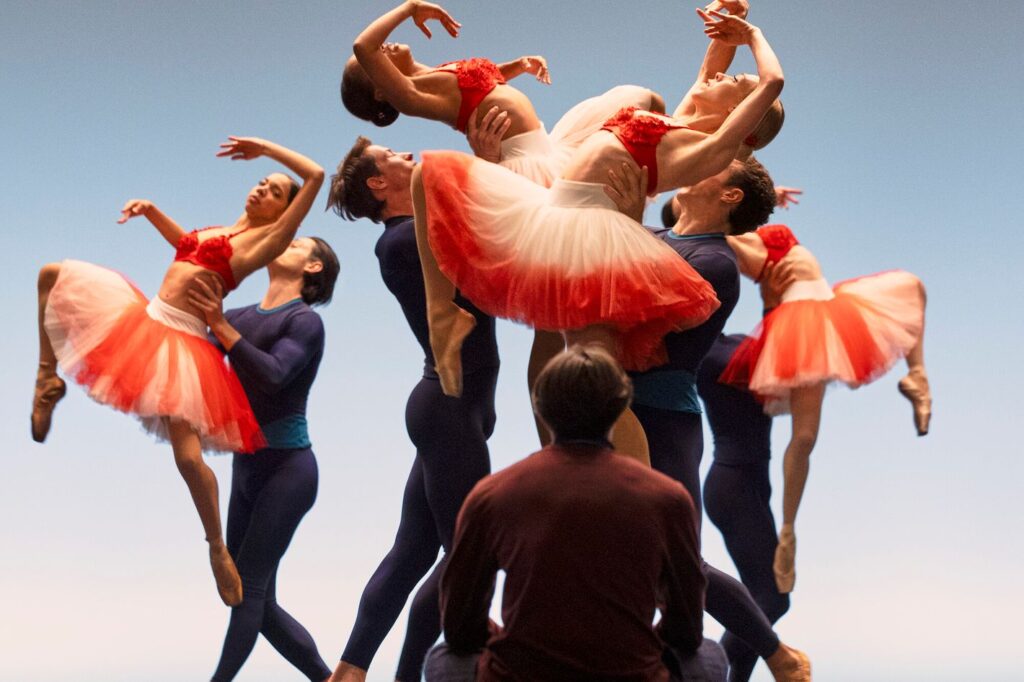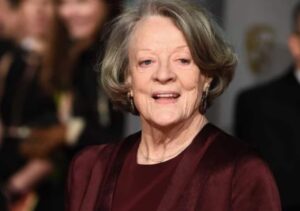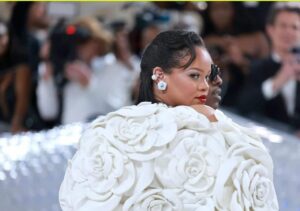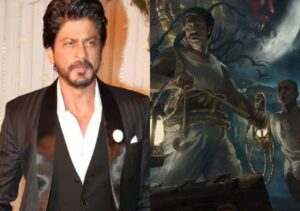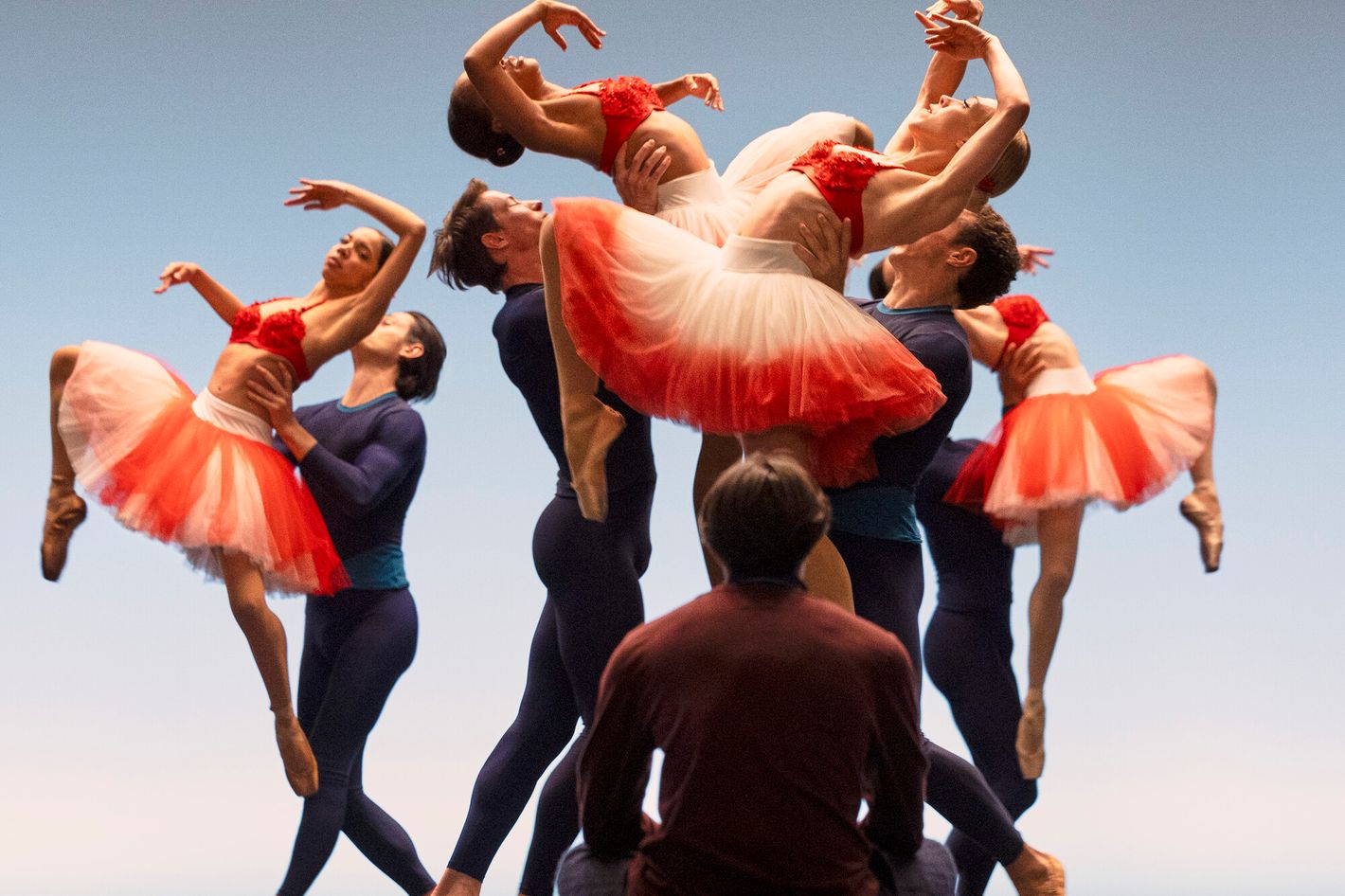
The television fan raised on Gilmore Girls and still demanding justice for Bunheads is intimately familiar with the tropes of Amy Sherman-Palladino’s aesthetic universe: fast talking, overflowing pop-culture references, and parental dynamics pulled so taut they could be plucked like a harpsichord string. There’s probably a lot of coffee, as well as a starry-eyed love of stage performance, especially classic musicals and dance. The Marvelous Mrs. Maisel, about a a Joan Rivers–esque comedian finding her way through the 1960s, pursued that sensibility to new extremes — exuberantly retro sets, intricately designed tracking shots, getting Barbra Streisand to license one of her charm songs — and won Amazon Prime Video scores of awards. Now, Sherman-Palladino has managed to get Amazon to fund a project that is, somehow, even more Amy Sherman-Palladino–y. It’s way more energized, so intent on its niche fascinations it can’t help but charm you. If you don’t cash your blank check on a transatlantic TV show about ballet, what are blank checks even for?
Filmed half in Paris and half in New York, Étoile’s premise is “What if the New York City Ballet and the Paris Opera Ballet exchanged stars?” Which is really the jumping off point for a larger question: “What if Amy Sherman-Palladino and friends got to hang out with a bunch of dancers in France?” That’s not to discount the amount of work that went into the series, but to say that the show comes with the palpable feeling of people who can’t believe they’re getting away with this.
The series introduces its two protagonists, a blue-blooded and put-upon head of the New York ballet named Jack (Luke Kirby) and Geneviève (a stylish but messy Parisian Charlotte Gainsbourg), dancing in a nightclub while arguing over whether Aaron Copeland or Tchaikovsky would win in a fight. (Later they’re seen introducing a Frederick Wiseman film at Film Forum.) Geneviève, the next day, reveals the true reason for her coming to America: With attendance down and her company still in the process of recovering from COVID, she proposes that she and Jack swap stars as a ploy for publicity. He sends rising choreographer Tobias Bell (Gideon Glick, playing a version of Justin Peck so obvious his name has the same scansion) and returns his own French ingenue Mishi (Taïs Vinolo); she sends her biggest star, or étoile, the diva Cheyenne Toussant (Lou de Laâge) to New York. Hotheaded, emotionally bruised, and imperious, with perfect hair, a soft spot for children, and a deep love of her art, Cheyenne is the ne plus ultra of the Amy Sherman-Palladino woman crossed with a “How to be like a French girl” listicle. She is introduced, after a fantasy dance sequence, on the high seas trying to ram an eco-warrior boat into a fishing ship.
Your tolerance may vary on that kind of precious touch, and Étoile is full of details that tend to be un peu too cute. Cheyenne’s mother is, for some reason, a DIY inventor. Dancer Gael (David Alvarez, who oozed charisma in West Side Story but burns less strong here) is pulled out of retirement from a job at an upstate farm stand. Yes, the show exists within the rigid and exacting world of dance, but there is an overflow of jokes about food and weight. Still, what grounds the series is often how much its idiosyncrasies make you aware of the hand of its creator. Sherman-Palladino’s fascinations recur in it like fractals, iterating on themes and character types of shows gone by. Yanic Truesdale, once Gilmore’s sarcastic French concierge, is now a sarcastic French ballet administrator. Gainsbourg, known outside the U.S. for going to emotional extremes, plays someone more akin to Lorelai Gilmore, propulsive yet scatterbrained, often spilling her mind at the wrong time to her superiors. There’s a disjunction, in that Gainsbourg has never been anything other than aspirationally chic, but the friction is interesting. You start to fall for Geneviève, especially as the show explores her spark with Kirby, who delivers a smoldering angst that will send fanfic writers straight to their keyboards. The same goes for Glick’s Bell, a character who’s handed as many quirks as Gilmore Girls’s town weirdo Kirk in a way that can be implausibly strained. (He joins a line in a boulangerie in Paris, for instance, because he’s a New Yorker who simply likes standing in lines.) Eventually, he settles into a slow burn with a French dancer (Ivan du Pontavice) that’s sweet and charged and, as I realized halfway through, a rare moment of Sherman-Palladino, whose work has formed the personality of many a gay man, depicting them as main characters.
The more central love story in Étoile, however, is between all these characters and dance. That may sound corny, but Sherman-Palladino so clearly loves the art form that the characters’ dedication to it becomes the anchor of the show’s emotions. The writer herself trained as a dancer and auditioned for Cats before taking her career in an entirely different direction with a job on the writing staff of Roseanne. Her mother was also a dancer. If Maisel was about her father’s world, then this, as well as the late, lamented Bunheads, is about her mother’s. If the writing can get cute, there lies within it a palpable appreciation for people who dedicate themselves to a brutally challenging and relatively under-rewarded pursuit.
Like Slings and Arrows, the great Canadian TV send-up of theater, Étoile satirizes the current economics of ballet and the silliness of the people in charge. Simon Callow, going full ham, plays a donor named Crispin Shamblee in the David H. Koch vein, intent on covering his various financial and moral crimes by putting his name on everything. (You imagine, given this is an Amazon show, Palladino is thinking about her patron Jeff Bezos, too.) But the show also apportions a significant amount of its running time to just letting you watch dancers at work. In addition to the members of the main cast who acquit themselves well dancing in character, the series is full of supporting figures who are stars of the ballet world, including Robbie Fairchild and Tiler Peck in the New York–set scenes. Each episode’s credits play over shots of dancers at work on the barre, stretching and rehearsing. But there are tributes within the episodes, too. Characters watch sequences of dance, whether from the classical repertoire — I can’t believe they got the Balanchine estate to let them license as much as they do — or new pieces created for the show. Before they begin, Étoile superimposes credits with the name of the work, its dancers, and its choreographer. It’s as if your friend Amy Sherman-Palladino is nudging you with her elbow in the audience — Look, look at what these amazing people can do.
More TV Reviews
Amy Sherman-Palladino cashes her blank Amazon check on a transatlantic TV show about ballet. C’est merveilleux!

